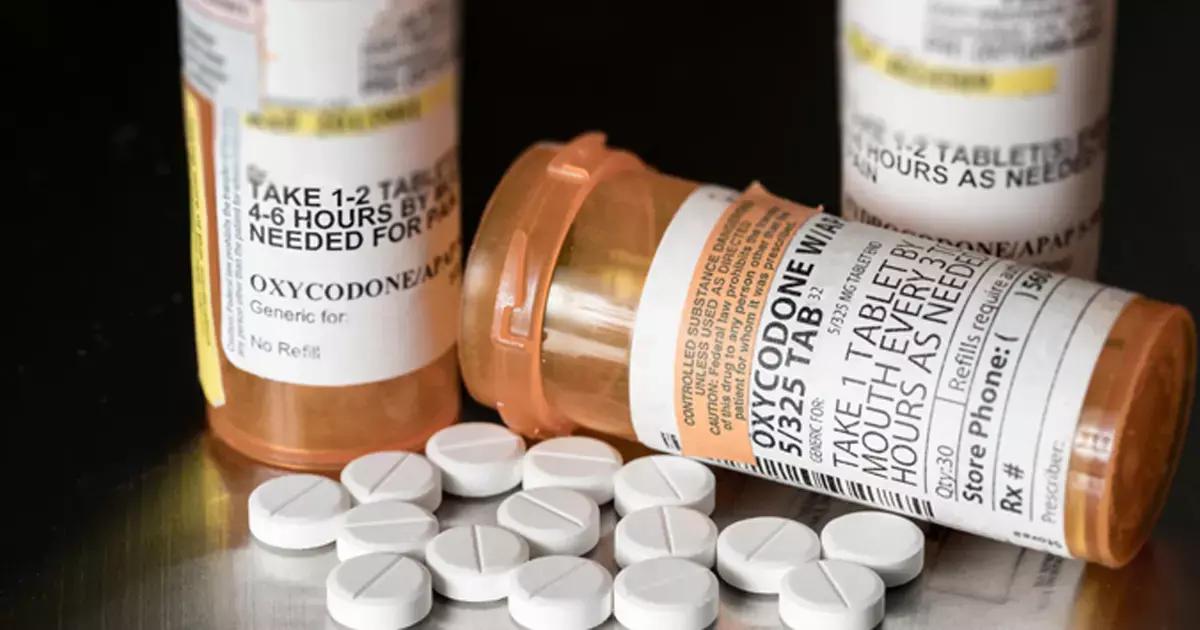Household With Prescription Drugs Have Increased Risk Of Opioid Overdose: JAMA
- byDoctor News Daily Team
- 27 July, 2025
- 0 Comments
- 0 Mins

In a new study published in the Journal of American Medical Association it was shown that, adult Oregon residents who live in homes with at least two people have an elevated risk of suffering an opioid overdose if there are available household prescription drugs, even if they do not have their own opioid prescriptions.
Prior research that looked at how household opioid prescriptions affected the likelihood of an opioid overdose only included commercial claims, did not account for fatal overdoses, and included only a small number of home prescription features. To better understand the risk of overdose, more comprehensive study is required. Michelle A. Hendricks and colleagues conducted this study in order to investigate the effect of household opioid availability and other home prescription characteristics related with persons' risks of fatal or nonfatal opioid overdose.
Adults in the Oregon Comprehensive Opioid Risk Registry database who lived in homes with at least two people were the subjects of a retrospective cohort research evaluating patient outcomes from January 1, 2015, through December 31, 2018. The period of data analysis was from January 26, 2023, to October 16, 2020. The primary exposures were the availability of home opioid prescriptions and the characteristics of household prescriptions. Data on hospital discharges, death certificates, and insurance claims were used to identify opioid overdoses. The availability of household opioid prescriptions and the features of those prescriptions for both people and households were modeled as 6-month cumulative time-dependent variables that were updated monthly. Multilevel logistic regression models were created, adjusted for demographic, household, clinical, and prescription data, to investigate the relationship between home prescription availability, household prescription features, and overdose.
The key findings of this study were:
The sample consisted of 1 691 856 people in 1 187 140 households, the majority of whom (53.2%) were women, of White racial descent (70.7%), lived in cities (75.8%), had commercial insurance (51.8%), had no Elixhauser comorbidities (69.5%), and had not filled any opioid prescriptions during the study period (57.0%).
Throughout the research period, 28 747 opioid overdose incidents were recorded.
The likelihood of an opioid-related overdose increased by 60% compared to people who had neither personal nor household opioid prescriptions in the previous six months, and it was greatest in cases when both the individual and another household member had received prescriptions for opioids during that time.
In conclusion, these findings highlight how crucial it is to inform patients about safe drug disposal and the dangers of using opioids at home.
Reference:
Hendricks, M. A., El Ibrahimi, S., Ritter, G. A., Flores, D., Fischer, M. A., Weiss, R. D., Wright, D. A., & Weiner, S. G. (2023). Association of Household Opioid Availability With Opioid Overdose. In JAMA Network Open (Vol. 6, Issue 3, p. e233385). American Medical Association (AMA). https://doi.org/10.1001/jamanetworkopen.2023.3385
Disclaimer: This website is designed for healthcare professionals and serves solely for informational purposes.
The content provided should not be interpreted as medical advice, diagnosis, treatment recommendations, prescriptions, or endorsements of specific medical practices. It is not a replacement for professional medical consultation or the expertise of a licensed healthcare provider.
Given the ever-evolving nature of medical science, we strive to keep our information accurate and up to date. However, we do not guarantee the completeness or accuracy of the content.
If you come across any inconsistencies, please reach out to us at
admin@doctornewsdaily.com.
We do not support or endorse medical opinions, treatments, or recommendations that contradict the advice of qualified healthcare professionals.
By using this website, you agree to our
Terms of Use,
Privacy Policy, and
Advertisement Policy.
For further details, please review our
Full Disclaimer.
Tags:
Recent News
Sleeping with Low Pillow Height May Increase Risk...
- 05 November, 2025
Novel Blood Test May Offer definitive diagnosis fo...
- 05 November, 2025
Esmolol Outperforms Landiolol in Reducing Mortalit...
- 05 November, 2025
Daily Newsletter
Get all the top stories from Blogs to keep track.


0 Comments
Post a comment
No comments yet. Be the first to comment!